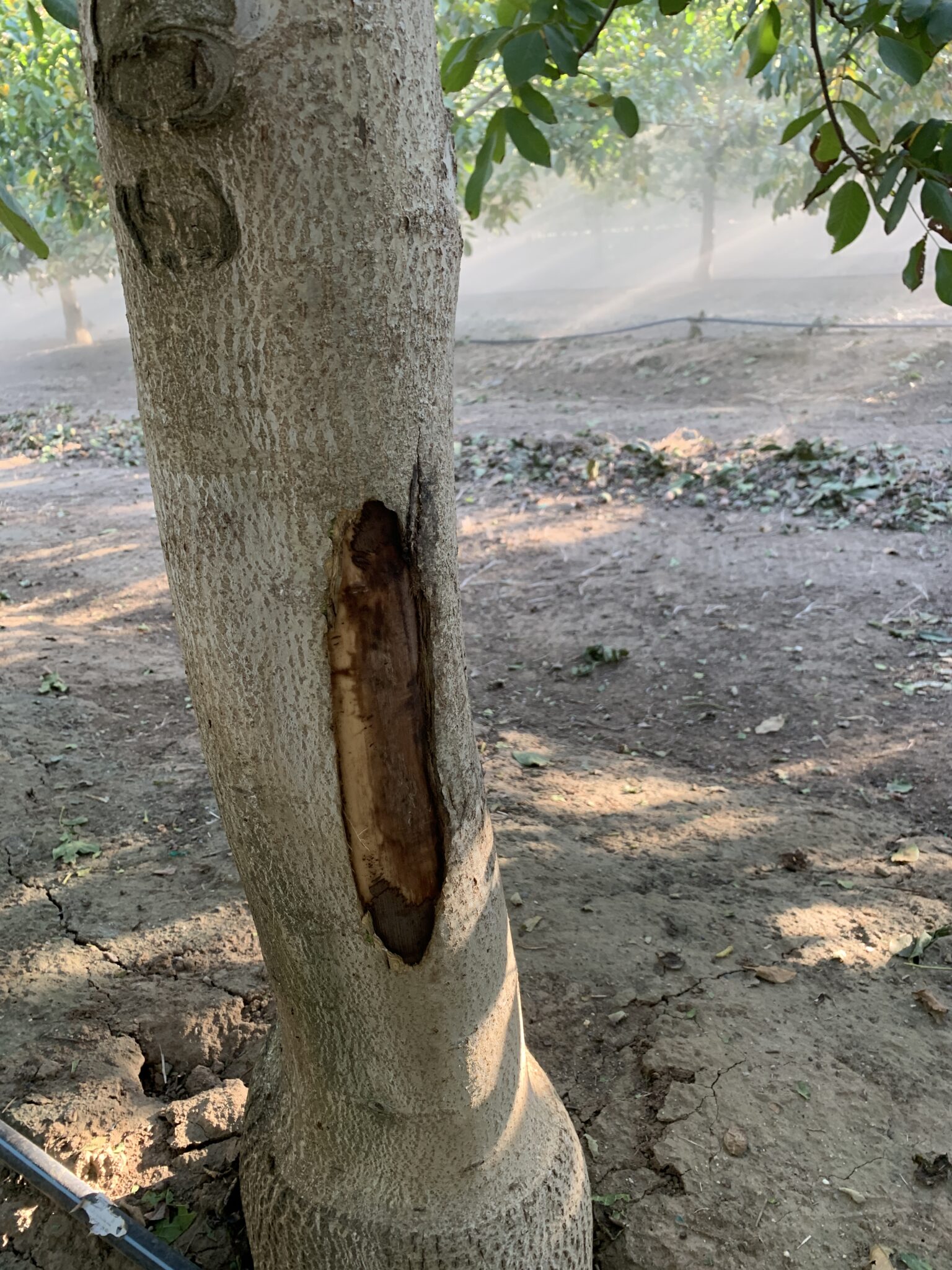
Too much clamp pressure, shaking too soon after irrigation or letting the shaker pads overheat can cause wounds to the walnut trees at harvest. Wounds that expose the tree’s cambium later are not common, UC farm advisors agreed, but they should be watched for signs of infection in the coming months.
UCCE Tree Crops Advisor Emeritus Janine Hasey recommends against wound treatment for injured walnut trees. Applying tree seal of or similar products may crack and end up allowing moisture and microbes to enter the wound, she said. If there is loose bark hanging from the tree it should be carefully removed so the tree’s natural callus process will proceed without interference. Depending on the size of the wound and exposure, the only material she recommends is a 50:50 interior white latex pain and water or whitewash to prevent sunburn on the exposed wood.
UCCE Orchard Systems Advisor Katherine Jarvis-Shean said care should be taken to prevent harvest injury to young trees. If the wound is not too severe, she said the wound would heal. A concern with tree injuries in younger trees is that they present an opportunity for pathogen entry. Jarvis-Shean said the most likely pathogen to enter a wound is the Botryosphaeria fungus. Particularly if there is a high level of inoculum present in the orchard.
Deep bark canker, which occurs in all walnut growing regions in the Central Valley, is also a concern. According to UC Integrated Pest Management guidelines, the deep bark canker pathogen is introduced into a deep wound from shaker damage that exposes the phloem.
Although trees attempt to close wounds naturally by forming callus tissue, the rate of healing can depend on environmental conditions. Ohio State University Plant Pathologist Nathan M. Kleczewski reports in an OSU Extension article that some trees may never completely close their wounds, but studies demonstrated that callus formation reduces infection and colonization by decay organisms and other pathogens.
Callus formation can be inhibited by lack of oxygen which is necessary for the healing process.











